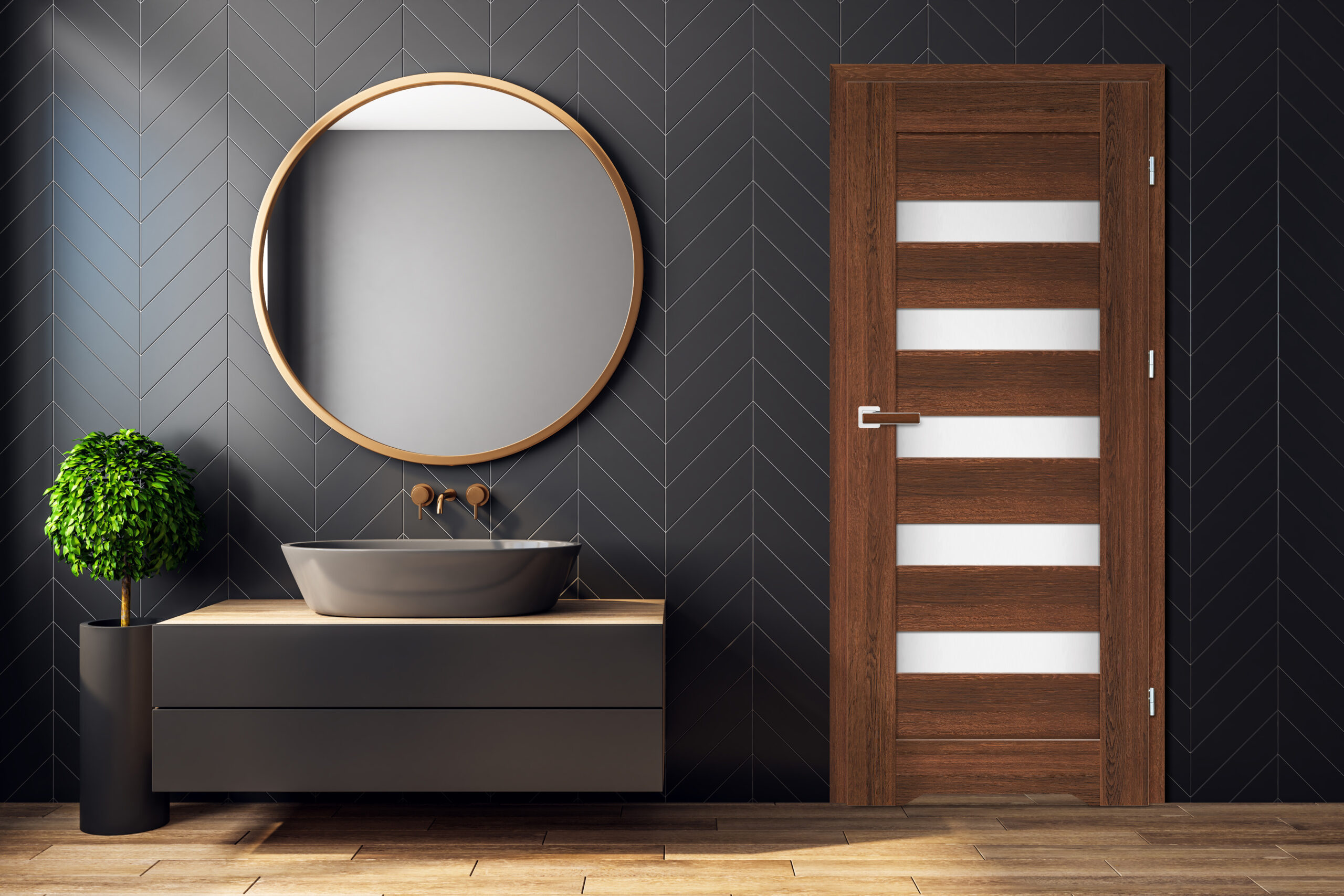Erkado door design and construction
In terms of construction, panel doors differ significantly from frame doors. The only similarity is the framing, which consists of two vertical and two horizontal elements made of MDF or solid wood. In a frame door these are visible at first glance – in a panel door they are hidden under a one-piece HDF panel. Both constructions, as they have been designed with due care and then manufactured using state-of-the-art technology, provide adequate strength and resistance to the effects of harmful factors.
The various models differ in the type of leaf infill, glazing, finishes and colours. Frame doors are a popular choice due to their durability and timeless design. Panel doors, on the other hand, have a very modern look and appeal to those who prefer minimalism. The choice of a particular solution is a matter of individual preference. When choosing interior doors, pay attention to the smallest details and the possible options to choose from. Consider whether you should choose a cheaper model or whether it is worth paying extra to increase its durability and functionality.
FRAME DOORS
Frame door construction is characterised by a solid frame made of MDF or glued timber, permanently bonded to a 22 mm or 35 mm thick crossbar with dowels. The infill of the door leaf consists of panels or panels of different shapes finished from the outside with a high-quality Greko or CPL veneer or a combination of their premium features. The doors are glazed on the rebate with toughened, milky or transparent glass, or the safer, smooth VSG bonded glass on both sides, which is available in matt or black. Three 2-pin hinges are responsible for the quiet and light operation of the sash. Frame doors are heavier than panel doors and therefore more resistant to deformation. Thanks to the variety of fillings and decorations used, they can be easily matched to a particular style.


PANELLED DOORS
Slab doors are constructed with frames made of MDF or wood with stable panels attached to them to form a uniform surface. These frames remain invisible to the user. The outer layer is made of wood-based HDF panels coated with a selected decor. The infill used inside the construction has a significant impact on the acoustic performance, durability and also the price of the door. A cardboard stabilising insert made of rigid and pressure-resistant paper – commonly referred to as ‘honeycomb’ – is used as standard in our doors. The advantage of doors with this solution is, above all, the low price and low weight. The solid board infill (offered at an extra charge) increases the durability and stability of the door leaf structure and guarantees very good soundproofing.
TYPES OF EDGE FINISHING
SOFT edge
SOFT door leaf has no sharp edges, which makes it aesthetically pleasing and modern. The sash is finished with veneer with increased scratch resistance, which significantly improves its resistance to use.


TYPES OF EDGE FINISHING
STANDARD edge
It consists in covering the flat surface with ST CPL veneer 0.15 mm, CPL 0.2 , CPL 0.7, PREMIUM polypropylene veneer, GREKO veneer or FINISH foil. The leaf in STANDARD technology has sharp edges where the top plate is joined with the edge veneer, as shown in the sketch. In CPL 0.2 and CPL 0.7 laminates, this is a very strong PVC veneer called ABS. At the same time, the way the veneer is joined is the same in rimless sashes for sliding and rebate-free systems.
DOOR CONSTRUCTION ELEMENTS
Durable connection
Durable connection between frame and transom with dowels.


DOOR CONSTRUCTION ELEMENTS
Keyway glazing
Keyway glazing with toughened, milky or clear glass, or alternatively with the safer, smooth VSG bonded glass on both sides, available in matt or black.
TYPES OF FRAME
Cross-section of frames
The few similarities in terms of frame and panel door construction are the framing, which consists of two vertical and two horizontal elements made of MDF or glulam.


TYPES OF FILLING
“Honeycomb”
This infill is made of special rigid cardboard arranged in a bee honeycomb pattern. The hexagonal structure of the cardboard is pressure-resistant (the resistance of the cardboard increases as it becomes more dry), but less resistant to mechanical damage. This lightweight infill considerably reduces the weight of the door. This type of material has no soundproofing or thermal insulation properties.
TYPES OF FILLING
Solid panel
Solid panel infill is characterised by a stable structure, durability and also enhanced soundproofing, thus providing the door with resistance to deformation and improving both thermal and acoustic properties. Such doors can separate utility rooms, corridors and rooms that require soundproofing from the living area.


DOOR SHORTENING
It is possible to shorten the wings in the PL standard, on your own, up to a maximum of 50 mm or up to 80 mm in the wings of the HERSE SET series (if they have not been undercut at the factory) and in panel wings only with a factory-fitted additional bottom beam. (ATTENTION: FRAGI wings, double-leaf and fire doors, rimless wings for sliding systems, GRAF glass doors, FORTECA RC2 and FORTECA RC3 burglar-proof doors as well as CZ standard frame wings cannot be shortened on their own). The height of a leaf made in the so-called CZ standard is 47 mm lower than the PL standard.